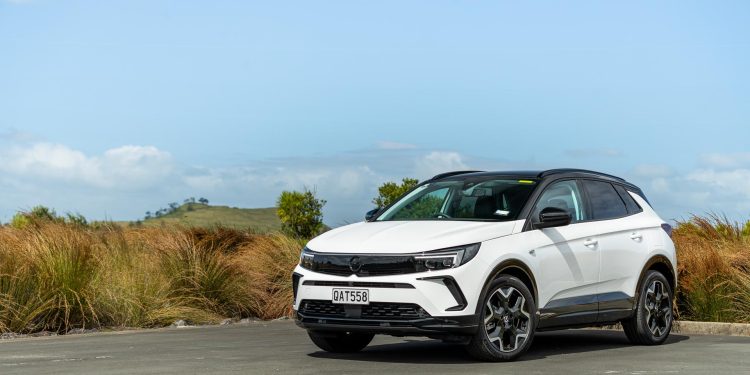2023 Opel Grandland Hybrid SRi review
Words: Kyle Cassidy | Photos: Isaac Western
The Opel Grandland range now has its hybrid variant, the one with lower emissions but a higher price of admission.
Where the Opel SRi ICE is $51,990 (though temporarily $46,990) the hybrid, which doubles up on propulsion units, has a price of $77,990 (but is also on promotional pricing of $69,990). And for the time being, you can take a further $4025 off in rebates.
So what do you get for all the extra cash? A bigger engine for one, the hybrid with a 1.6 turbopetrol versus a 1200cc triple.
And you also get an 81kW/320Nm electric motor, meaning this model comes with a total output of 165kW and 360Nm, topping the 1.2T’s 96kW/230Nm. Where the ICE is said to take 10.3sec to hit a hundred, this can do it in 8.9sec. So it gets things done a bit more easily.
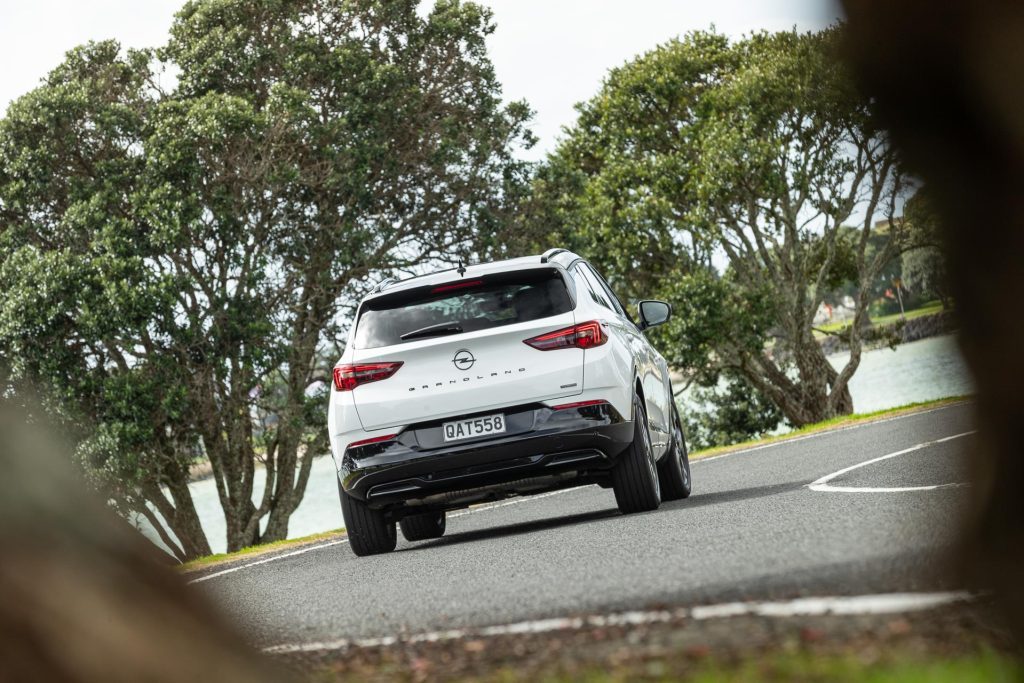
The other figures of note include the 13.2kWh of energy from the lithium-ion battery which Opel says can give up to 67 kilometres of electrically motivated travel.
And the stated fuel use is just 1.0L/100km. However, as we’ll get to, that can vary wildly with PHEVs.
Like the ICE machine, it’s a front-driver and runs an eight-speed auto. The kerb weight is the other difference, the hybrid at 1732 kilos versus 1386kg for the 1.2. But that is the downside with electric vehicles.
It’s not that this feels lardy during regular commuting as all that electric torque made with minimal fuss gets it moving easily. And working as it does via the automatic, the relatively modest motor outputs do a good job.
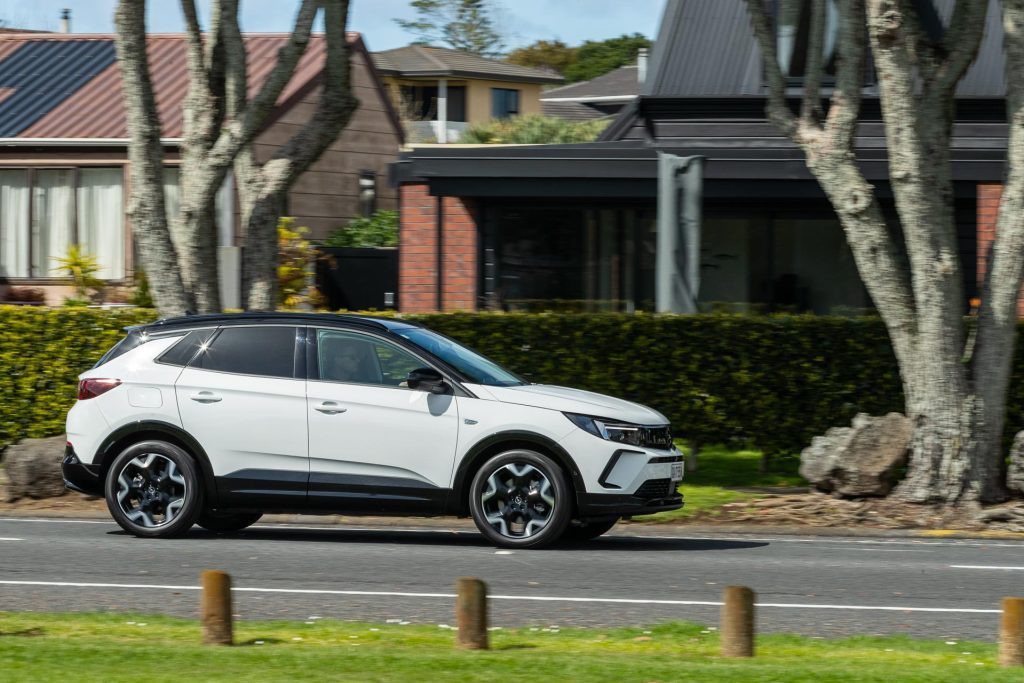
We didn’t quite replicate the claimed 67 kilometres of travel in EV mode, more like 50. We then let it run in hybrid mode for the next 50km, to get a better idea of fuel consumption per 100km travelled, and it returned 5.5L/100km.
That was predominantly urban type roaming, with minimal motorway running. And this highlights the need to recharge a PHEV every night at home, a full recharge taking seven hours via the mains with the supplied cable.
Otherwise, you don’t have to think too hard about driving this; whack it in Drive and forget about the rest. It’ll default to Electric drive mode when the battery is charged, the engine only coming in when you stomp on the gas.
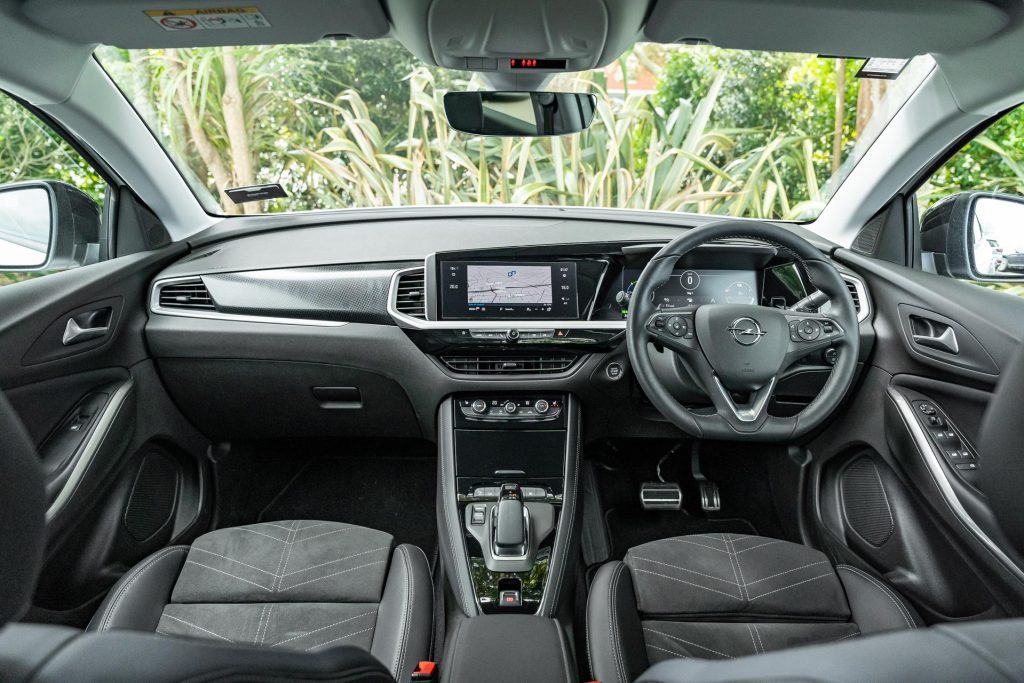
You might want to yank on the gear lever (which sort of looks like a handbrake) to put it in B mode, which adds a little motor drag to help halt you and generate some energy.
Once the battery can no longer support full EV driving, you’re in hybrid mode, the engine and motor working together, although it’s the 1.6 petrol that does the bulk of the work.
No matter the mode however, this musters enough pull for the job, the engine never having to work too hard thanks to the electric assistance. The steering is light and the turning circle (10.7m) is brilliant for urban running.
Just a pity the ride is not so accommodating; it’s too sharp over the bumps. The steering heft beefs up in Sport mode should you dare to switch things up, and the response from the drivetrain is poked along too.
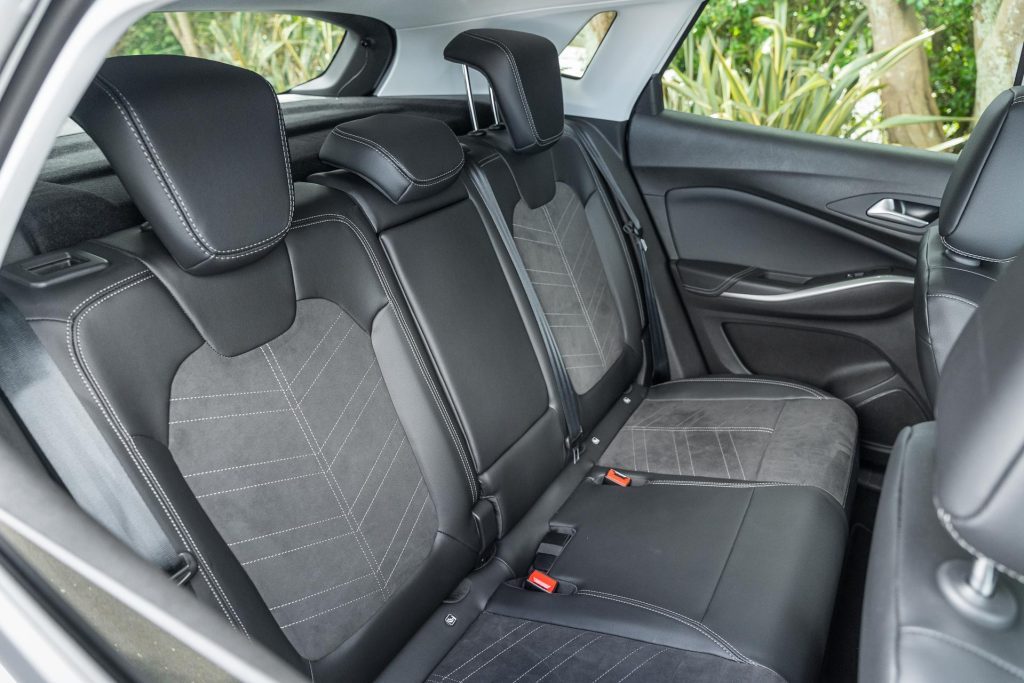
Its steering is fairly vice free, though most of the road feel is damped out but it does turn okay. And it’s also alright in terms of roll control and road holding, the latter helped by generous 19-inch rubber. But the ride is always a bit hard for local roads.
It’s a sharp looker this Opel, particularly in its white and black colour scheme. This is also the only hue you get free, the others carrying a surcharge. But it’s otherwise a well fitted out wagon.
There are twin digital displays, the instrument panel customisable, while the 10-inch touch screen has sat nav, smartphone connectivity and the like.
It can be a little slow in operation however, the resolution and graphical interface somewhat tired too.
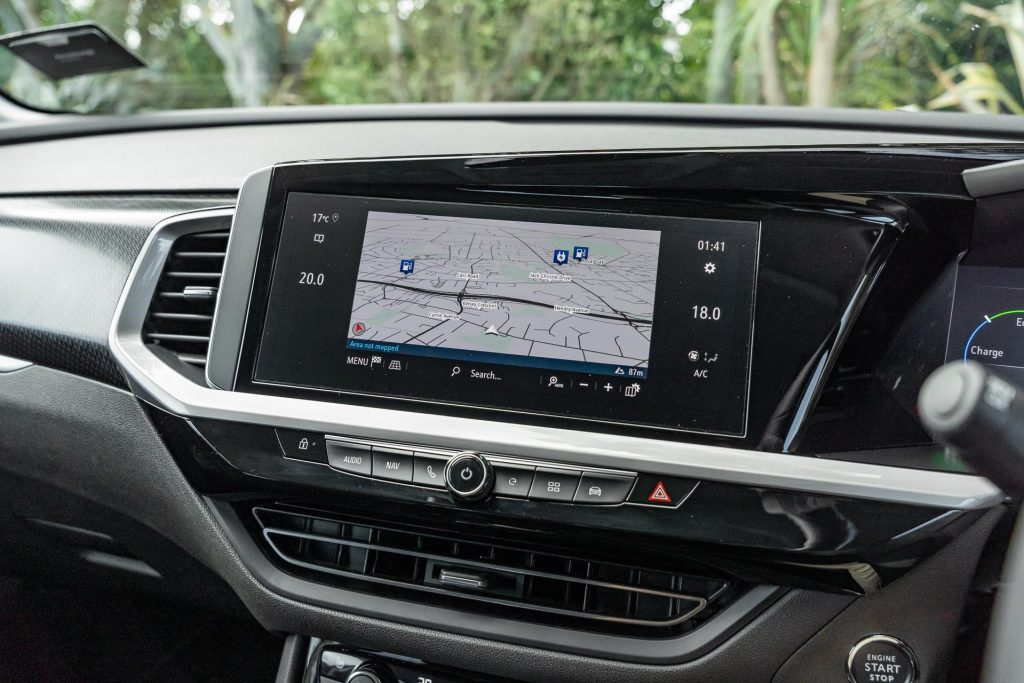
While the overall vibe of the cabin is okay, there are some aspects that reveal its age; the Grandland has been around in Europe since 2017. There’s a mix of surface treatments, some a bit hard and harsh for the money.
However they have managed to incorporate straightforward controls for the driver aids and there is enough of that safety technology to tick the boxes.
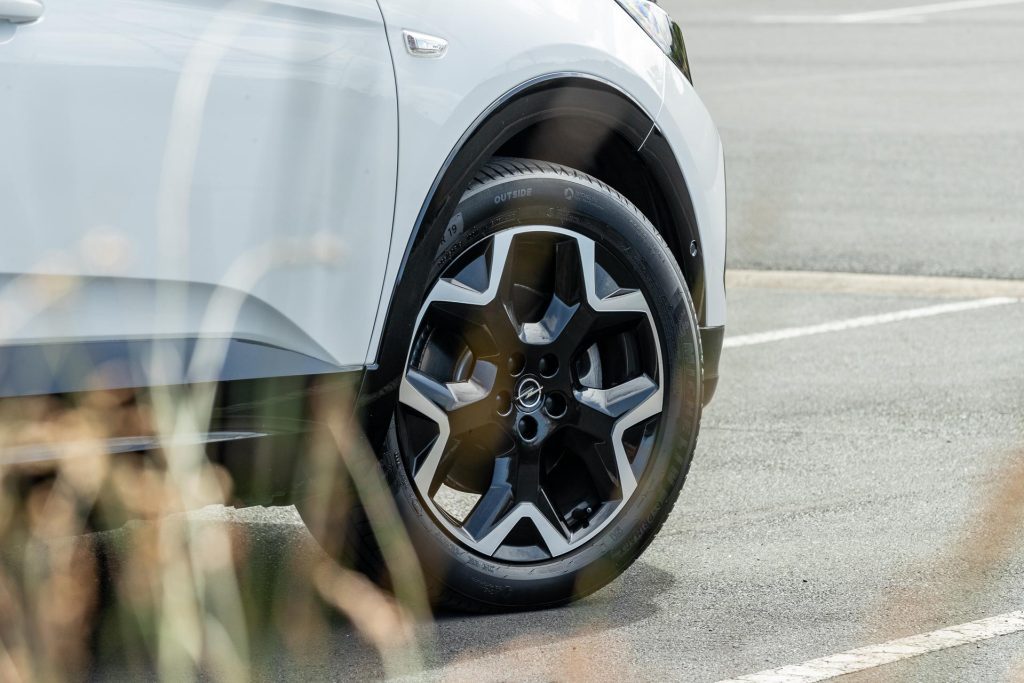
The seats are on the firmer side, and have a combination of manual and powered adjustment but the driving position is sound and the outward view is good. Cabin storage is lacking however.
The Grandland is an in-betweener, being a bit bigger than your usual compact SUV, but smaller than a ‘medium’ SUV like a Toyota RAV4. And so it’s not overly endowed with rear seat space; good enough for kids however with Isofix fittings but no charge ports back there.
The boot space isn’t too bad though at 390L, as it’s well shaped and the seat folds easily. There is no space saver but there is some space for the charge cable under the floor.
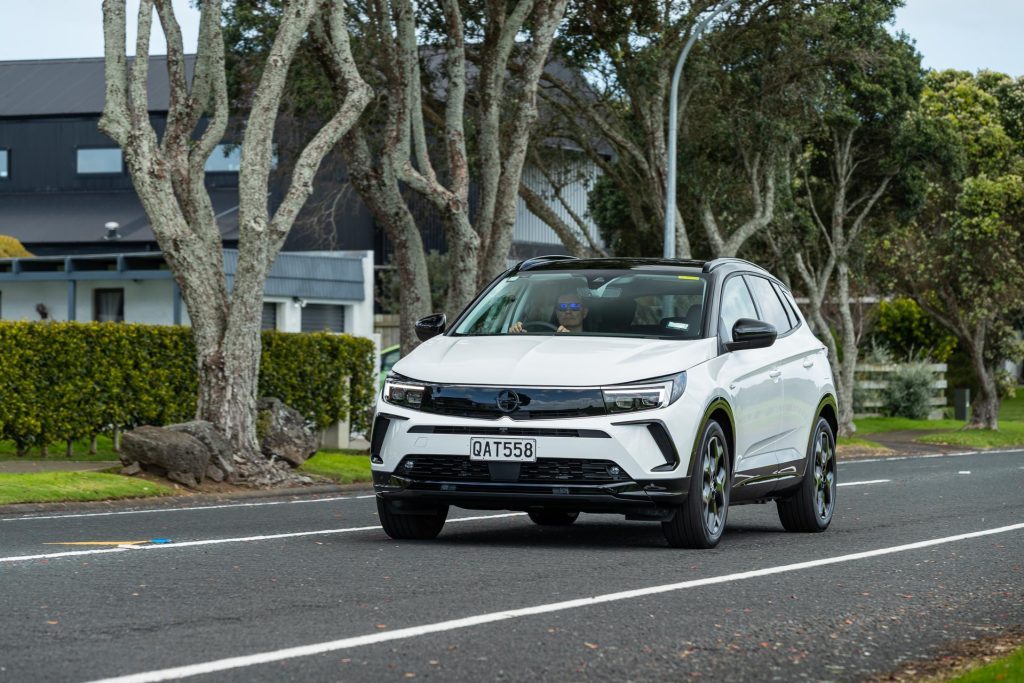
In most regards, the Grandland isn’t a bad car – we quite liked its general ease of use in town running, and the size was right for a family with primary-aged kids.
But it’s the pricing that makes it harder to recommend, even at the lowered promotional points. There are simply more up-to-the-minute plug-in machines on offer with better hardware at a lower price.
Published October 2023
| Model | Opel Grandland Hybrid SRi |
| Price | $77,990 |
| Clean Car Discount | Rebate – $4,025 |
| Engine | 1598cc, IL4 + electric motor |
| Total System Output | 165kW / 360Nm |
| Drivetrain | 8-speed auto, FWD |
| Fuel Use | 1.0L/100km |
| C02 Output | 43g/km |
| 0-100km/h | 8.9sec |
| Weight | 1732kg |
This story was first published in the October 2023 issue of NZ Autocar magazine


